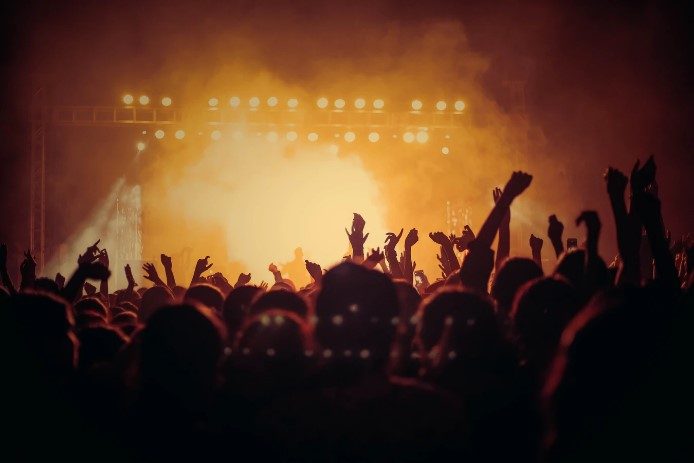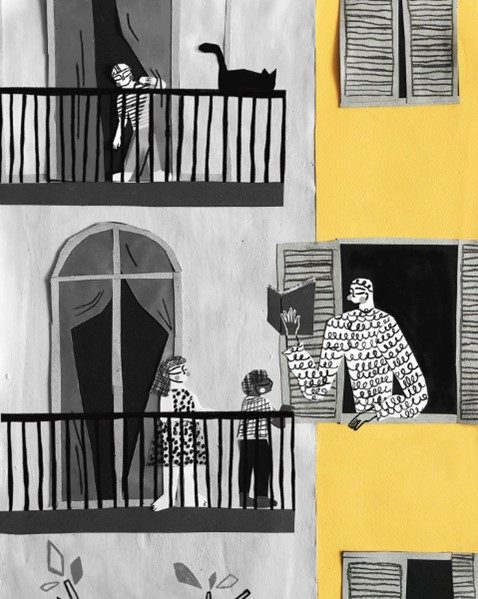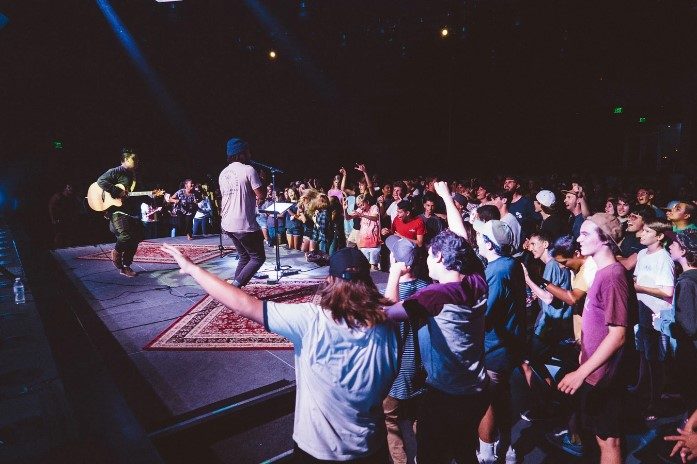Valued at $1.43 billion per year, the Victorian live entertainment industry has long been a creative and economic force to be reckoned with. Figures show that Melbourne’s iconic performance venues housed an astounding 100,000 attendees every Friday & Saturday night alone in 2019. Live shows were as synonymous with Melbourne culture as a well-made single-origin long black. However, as the pandemic proved itself to be more forbidding than the average flu, our beloved entertainment industry was doomed to be one of the first to be shut down, and one of the last to reopen. The restrictions around opening under our new health & safety guidelines mean the already-struggling industry will be unconventional for a long time yet. But do not fear, there are plenty of drum solos and sweet riffs at the end of the tunnel!

How It Was
Cancellations and postponements swept the country from March onwards, from big-name international acts to an assortment of festivals. All sectors of the business, from three-day extravaganzas to intimate local gigs were hit fast and hard. Hundreds of thousands of jobs vanished into thin air as production crews, event planners, hospitality assistants, artists and promoters were suddenly left jobless and without a clue as to how long it would be before they could return. Government support schemes such as Jobkeeper have helped for the meantime, but as The Tote’s owner, Jon Perring, has commented, “the protections are all going to drop off somewhere around October 1. After that, if we don’t get a lifeline from the Government, you’re going to see music venues just disappear en masse.” As well as the staggering loss in revenue, venue owners fear that their establishments may fall prey to large developers, who have been eyeing certain properties for several years. The impact that these extended closures will have on Melbourne’s music scene is unthinkable if venue owners indeed face no option but to hand over their keys.
Before the virus, most venues made the majority of their revenue not from ticket sales, but from alcohol purchases. This business model allowed many places the flexibility of charging $10 or even nothing for a performance, which not only opened up live music to all income brackets, but also made room for lesser-known artists. Unfortunately, most venues are not able to break even, let alone spin a profit, when they are not able to fill anywhere near capacity and generate the resulting alcohol sales. This means in order to adequately pay performers and crew, your average small-time gig may cost around $60 instead of $10, and for a lot of Melburnians this will be that bit too much out of pocket for some rando local band.

How It Is
In preparation of the return of live music, The Nightcat, a popular Fitzroy band room, has set the standard for a post-pandemic socially-distanced venue design. The dance floor has been replaced by tables meticulously 1.5m apart, black crosses mark the spots where performers must stand on the stage, and owner Justin Stanford has suggested running three back-to-back shows, for example at 7pm, 10pm & 1am. This could put enormous strain on an act performing three times in one evening, and a lot of punters will balk at the concept of sitting down for a show (especially metalheads like myself)! Music industry leaders are therefore reliant on the hope that their fanbase will be willing to abide the new norm in order to support this struggling industry.
The newly established Live Entertainment Industry Forum, led by former Cricket Australia boss James Sutherland, has brought together bigwigs & rivals from across the entertainment and sports industries to establish an across-the-board post-pandemic road map. Live Performance Australia has also just released a comprehensive document of Covid-safe guidelines to prepare the performance sector for reopening. These criteria offer suggestions such as; rigorous cleaning, hair & makeup to be done by performers themselves, close performers such as actors and orchestra players to wear face shields or use sneeze barriers, patrons to sign in at shows in case tracing is required, technical equipment such as microphones to be allocated and not shared, and tour venues & artists exchanging covid-safe plans, and outlining local covid testing locations.
How It Will Be
Although the state of the industry appears grim, there are many silver linings to be found. Having been locked inside for what feels like an eternity, there is an undeniable yearning across Melbourne to get out and about and have some good old-fashioned rollicking fun at a gig. After all, the roaring 20’s came right after the Spanish Influenza. Even though this was over a century ago the sentiment is still strong; if you can survive a pandemic then it’s time to party! Furthermore, with travel restrictions in place and many international stars unable to tour, this will give our homegrown heroes more opportunity to hit the stage and get their 5 minutes in the spotlight, earning recognition they may not have had otherwise. Similarly, if venues are forced to limit capacity or close entirely, we will most likely see a rise in house parties, warehouse raves, open-air events or the increasingly popular lounge room gig. Companies like Parlour Gig who help facilitate local in-house gigs will undoubtedly grow in popularity, so you may end up ditching The Corner for the Little Birdy concert happening on your very street!

At the end of the day, the live performance industry is inextricably part of the fabric of Melbourne and won’t go down without a fight. After so long in isolation it’s clear punters not only miss the shows themselves, but have developed a hankering for human connection; and what unites us more than the shared love of music? This is proven by the $890,000 raised by The Support Act Emergency Appeal who are offering crisis relief for music workers affected by the pandemic across the country, whilst many gig-goers continue to support artists by purchasing tickets to online performances. It is without a doubt our entertainment industry will survive; it might look a little different, might cost a bit more and you’ll have to make sure you’re headbanging a safe 1.5m distance from your fellow patrons, but we will survive. (And we’ll get to see some pretty fabulous performances to boot!)